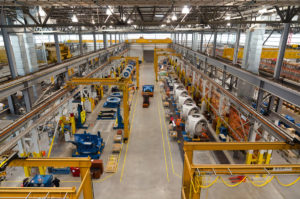First, let’s talk about what a manufacturing broker is exactly, and what they do. They are a single point of contact for a group of manufacturers who can often together produce fairly complex products. This all happens without you needing to go to manufacturers individually. They either charge a percentage on top of the manufacturers for their time or are paid by the manufacturer like a salesperson would. They often act as a pass-through entity for your goods and money. Brokers are not designers or engineers typically, though they sometimes are. They are advocates for both sides as they get paid when both sides are happy.
Saving Money

You can save money long term by using manufacturing brokers who are constantly looking for the best manufacturers for you.
Ian Peterman, CEO Tweet
If you already have all your own manufacturing sources, then you may not need to hire any manufacturing brokers. With that being said, if you are paying someone a yearly salary to manage all those vendors you currently have, then outsourcing to a broker may free up some of your cash.
Often brokers are paid by the manufacturer, just like a salesperson and you don’t pay more for it. Finding a good broker can help get your product manufactured cheaper than hiring employees or doing it yourself. They already have relationships with the manufacturers and can sometimes help guide your project.
Manufacturing Backups
Having backup manufacturers is important if you want to survive hockey stick growth.
Ian Peterman, CEO Tweet
Good manufacturing brokers also always have backups for their manufacturers. This can save a start-up, or a Kickstarter project. Many Kickstarter projects have had issues where a manufacturer has closed their doors between launch and time for production.

I talk about Kickstarters and Manufacturing in another blog post because of how much of a problem this can be. For start-ups and large businesses, having vendors go under is a consistent issue. Sometimes this is detrimental to the point of collapsing a company or product.
What We Do

We provide support beyond just design, but managing and ensuring production continues for you.
Ian Peterman, CEO Tweet
We provide a rare combination of being a design firm with full engineering & production support. With our team, we have many technical skills including sourcing. Pair all that with our ability to be a broker for your production needs and we are your product launch team.
We can launch your product and keep it in production even if a vendor goes out of business. You don’t have to deal with scrambling to find a new vendor, we’ve already got that handled.
Supply chain management is important and the right broker, sourcing agent, and development firm can make it so that issue is dealt with quickly and for you. This is something we handle in phase 4 of the Peterman Method™ and continues through the life of the product. So, in my opinion they are worth it, especially if you don’t have the resources to have a dedicated person doing sourcing and vendor vetting and management.
Your Next Steps
How important is your supply chain?
It's the core of your success, let's go over the highlights
Related Conscious Design BLOG Posts
What is Design for Manufacturability?
Logically, you could figure out what Design for Manufacturability means in a broad sense. What does it really mean for you and your product? Design for Manufacturability, or DFM for short, is where Design meets Production. The DFM process takes a design and produces a final design that can be manufactured properly, and at the desired cost. This step is often skipped by those developing their first product. They end up costing more. Investing more on time and money than it should. We’ll go over some of what DFM does for your product and why it is a very key component to developing a great product. Manufacturability This is the first step in DFM. An engineer or designer takes a design and reviews it to ensure the product can be manufactured as efficiently and effectively as possible. Draft angles for injection molded parts, machinable areas for CNC, stacking tolerances, fit checks, and many more items are part of this DFM checklist. BLANK Ian Peterman, CEO Tweet Costing This is where things can get interesting, such as actually increasing part count, decreasing reusable parts, etc may be required to put a product into a certain price window. Costing looks at every cost of a product, from hardware selections, country of production, materials, and how each part needs to be made. A Sourcing Agent is closely tied into this part of the process, and works with the designer through this process. Part Count BLANK Ian Peterman, CEO Tweet How many parts does it take to make your product? I’ve worked on products ranging from just one to the thousands. A part count is a balancing act, sometimes you can make 4 parts into 1, but the cost would be 10 times greater. The part count is an easy way to estimate product complexity, assembly costs, et. Usually more is more expensive, and so a lot of work can be done to decrease the part count, make assembly easier, and take less time. Reuse and Replacement For those businesses who are sustainably minded, which every business should be, designing a product for reuse is something that happens in the DFM stage. Which components can be reused, which need to be replaced, even what parts can be recycled or not are also influence in the DFM process. Material and Finish blank Ian Peterman, CEO Tweet DFM also looks at what materials and finishes are used in a product. Sometimes a material might be chosen that doesn’t work well with a certain manufacturing process or is extra expensive. Changing a material, or finish can change the perceived quality, actual quality, and the cost of a product drastically. Lead time is also influenced by finishes as they add extra time to production. Lead Time A lead time of a product determines how quickly a business can turn its manufacturing investment into a profit. If it takes 10 weeks to produce a product, that means a business is going to wait at least 10 weeks before it gets paid. Decreasing lead time also falls within the DFM process. Shorter lead times mean quicker product turnaround, as well as usually less costly. Through selecting processes, materials, and finishes, the DFM process can save businesses from having long costly lead times on their products. Your Next Steps manufacturing Products Kickstarters and Manufacturing: What to Pay Attention to manufacturability Conscious Design Choosing a Manufacturer choose a manufacturer Related Conscious Design BLOG Posts Author Mr. Peterman View all posts
Choosing a Manufacturer
We’ve talked about why you should hire out sourcing here, but in case you want to dive into this yourself, here are some things to look at. A common question when looking for manufacturers for your product is whether you want to source domestically or from overseas. You likely already know that it’s almost always cheaper to source your products overseas, but there’s a lot more to that decision than just the upfront investment and cost per unit. Things like quality, shipping, and time to delivery are other items to look at and can change how you might decide on a manufacturer. If you are just looking on your own, some of the best resources for finding manufacturers can be free online supplier directories. These directories can contain profiles for hundreds, or even thousands, of manufacturers, wholesalers and suppliers. There are many for domestic and overseas options. Looking through the sea of options can be a bit overwhelming. Making sure your idea is protected when discussing it and that the technical requirements are understood is very important when finding the right supplier for your product. As an area of expertise, we can support you through this and make sure those conversations are started with the right information. Domestic and overseas sourcing have their advantages and disadvantages which we will look at below: Domestic Advantages Higher manufacturing quality and labor standards Easier communication with no language barrier Marketing appeal of being made domestically Easier to verify reputable manufacturers Faster shipping time High intellectual property right protection Greater payment security and recourse BLANK Ian Peterman, CEO Tweet Domestic Disadvantages Higher manufacturing costs Higher setup costs Less manufacturing type choice Overseas Advantages BLANK Ian Peterman, CEO Tweet Lower manufacturing costs Lower setup costs High number of manufacturers to choose from One-stop services like Alibaba have made it easy to navigate suppliers Overseas Disadvantages Lower perceived quality from customers (Usually) lower manufacturing and labor standards Little intellectual property protection Language and communication barrier can be difficult to navigate Difficult/costly to verify manufacturer and visit on-site Longer shipping time Cultural differences in business practices Product importation and customs clearance Less payment security and recourse BLANK Ian Peterman, CEO Tweet Things are changing in every market, and always will, making what would be a good decision today possibly be a bad one in the future. For the US market, Canada and Mexico also offer similar pros and cons as domestic, but the US dollar is stronger, so these are sometimes cheaper than the US. The costs of manufacturing in many countries in Asia is increasing, as is labor costs. When looking at the European manufacturing market there are many options that compete very well with US and Asian manufacturers. When researching options, it’s important to look at the specific needs of the product being made, where it’s being sold, and other logistics and costs that happen when taking a product from a manufacturing document to a product in consumers hands. We source the right suppliers and vendors for you and your product or business. Your Next Steps Developing Smart Products What does it take to develop a smart product? Develop a Smart Product The Peterman Method™ Learn about the Peterman Method and download your own copy Peterman Method™ Related Conscious Design BLOG Posts Author Mr. Peterman View all posts
The Importance of Prototyping
I can’t tell you how many clients have come to me saying they need help developing a prototype to get funding or the feedback they need to finish developing the product.


